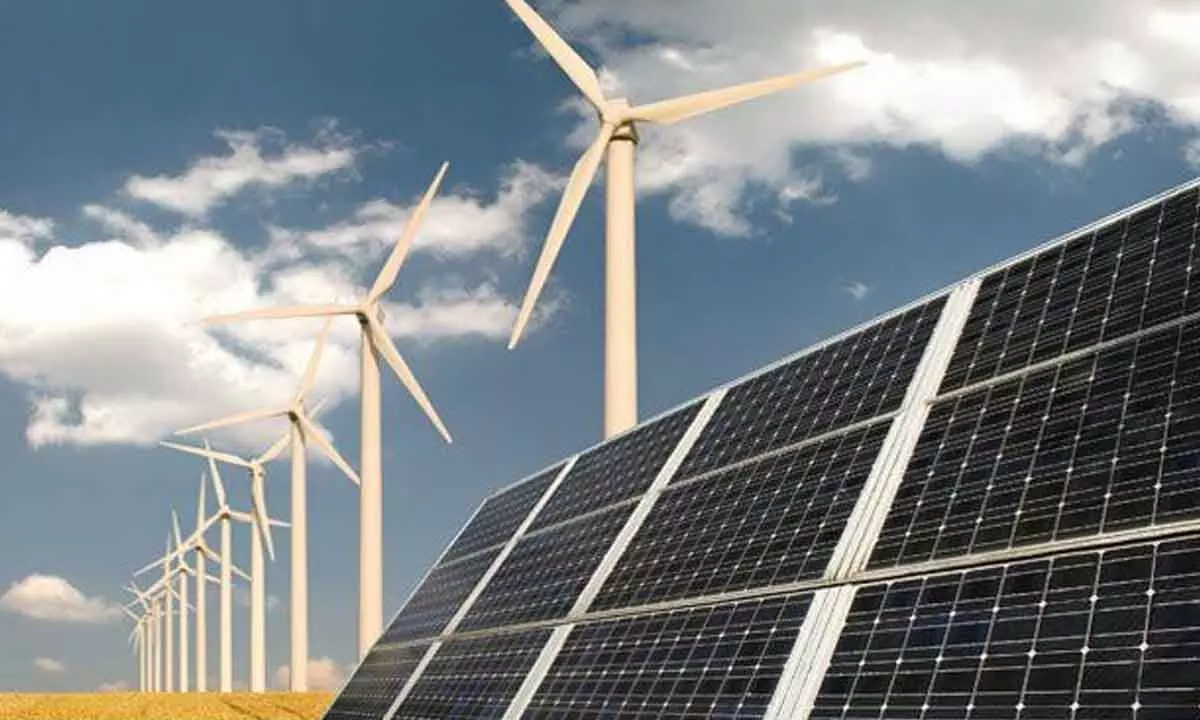Sustainable finance: The role of budget planning in stimulating growth of renewable energy
The country’s solar and wind projects from 2022-2032 require around Rs. 20.67 lakh crore
image for illustrative purpose

For the upcoming budget for FY 2024-25, from the perspective of sustainable financing to support RE growth, a few areas such as distributed RE installations and localising the supply chain are expected to be on the priority list. Accelerating rooftop solar installations is likely to see a substantial boost in budgetary allocations
In the past few years, the Union Government has been pacing up its interventions to meet the ambitious clean energy targets-to steer the country towards 50% cumulative installed power generation capacity from non-fossil fuel sources by 2030 and achieving net zero by 2070.
India currently has an installed generation capacity of 187 GW from non-fossil fuel sources, including 133 GW from renewable energy (RE) sources, as of November 2023.
Between 2016 and 2022, while India has seen a sharp acceleration in capacity addition of non-fossil fuel-based generation sources, the same has not exceeded 16 GW thus far on an annual basis. This implies that the country needs an average annual capacity addition of about 49 GW to achieve the target of 500 GW non-fossil fuel-based cumulative generation capacity by 2030.
One must understand that availability of financing is a key enabler for fast tracking of RE capacity additions. The draft NEP prepared by CEA has estimated the funding requirement for solar and wind projects during 2022-2032 at Rs.20.67 lakh crore. Budgetary measures undertaken by the government not only play a critical role in promoting and supporting sustainable financing to accelerate implementation of RE projects but also emphasise its national significance.
Annual budgets of the Government of India have provided the much needed impetus and direction to the RE sector by way of allocation of funds towards targeted programs as well as announcement of important decisions relating to taxation and import duties.
For the upcoming budget for FY 2024-25, from the perspective of sustainable financing to support RE growth, a few areas such as distributed RE installations and localising the supply chain are expected to be on the priority list. Accelerating rooftop solar installations is likely to see a substantial boost in budgetary allocations, especially considering the recent announcement regarding 23% increase in per KW central financial assistance for up to 3KW installations under Phase-II of Rooftop Solar Scheme.
The Centre’s flagship schemes on RE, which have social benefits also, such as the PM-KUSUM scheme and bio energy program, are also expected to receive a higher budgetary allocation. Subsidies provided under GOI schemes play a key role in improving the commercial viability of RE projects, thereby enabling their off-take, financing, and implementation.
Another area of potential focus is the development of 4000 MWh of battery energy storage systems, where the government has recently announced VGF support of up to 40% of project cost. It may be noted that allocations for green energy corridor and capital (equity) infusions for key public sector entities relevant for RE such as Solar Energy Corporation of India (SECI) and Indian Renewable Energy Development Agency (IREDA), among others, are also likely to be covered in the budget process. Such investments allow these entities to issue more tenders (SECI) or increase the lending portfolio (IREDA), thereby driving capital investments on RE, including solar. The Centre may clarify its plan for further rounds of issue of sovereign green bonds to finance development of sustainable energy projects. Another important area likely to remain in focus is the thrust on accelerating investments towards indigenisation and innovations in the RE sector.
The PLI Scheme for High Efficiency Solar PV Modules, which is already in place, may see a further extension/ allocation of funds. Another area to watch out for will be the National Green Hydrogen Mission which may also get an enhanced allocation in the ensuing budget as countries across the globe have launched targetted programs driven by the ambition to emerge as leaders in the new energy segment.
On the taxation front, the Union Government has taken major decisions in the past, which have, over the years, substantially influenced the sector. Further interventions in such aspects will be linked to their assessment of domestic manufacturing capability across solar value chain and other RE equipment.
Finally, there are more opportunities to tap like the use of India’s startup ecosystem to drive innovations and growth in new-age clean energy technologies. Considering the need for acceleration in non-fossil fuel-based generation capacity to ~50 GW per year, it is imperative that all available forms of interventions are explored through the budget as well as other instruments available with the government.
(The writers are partners of Deloitte India)

